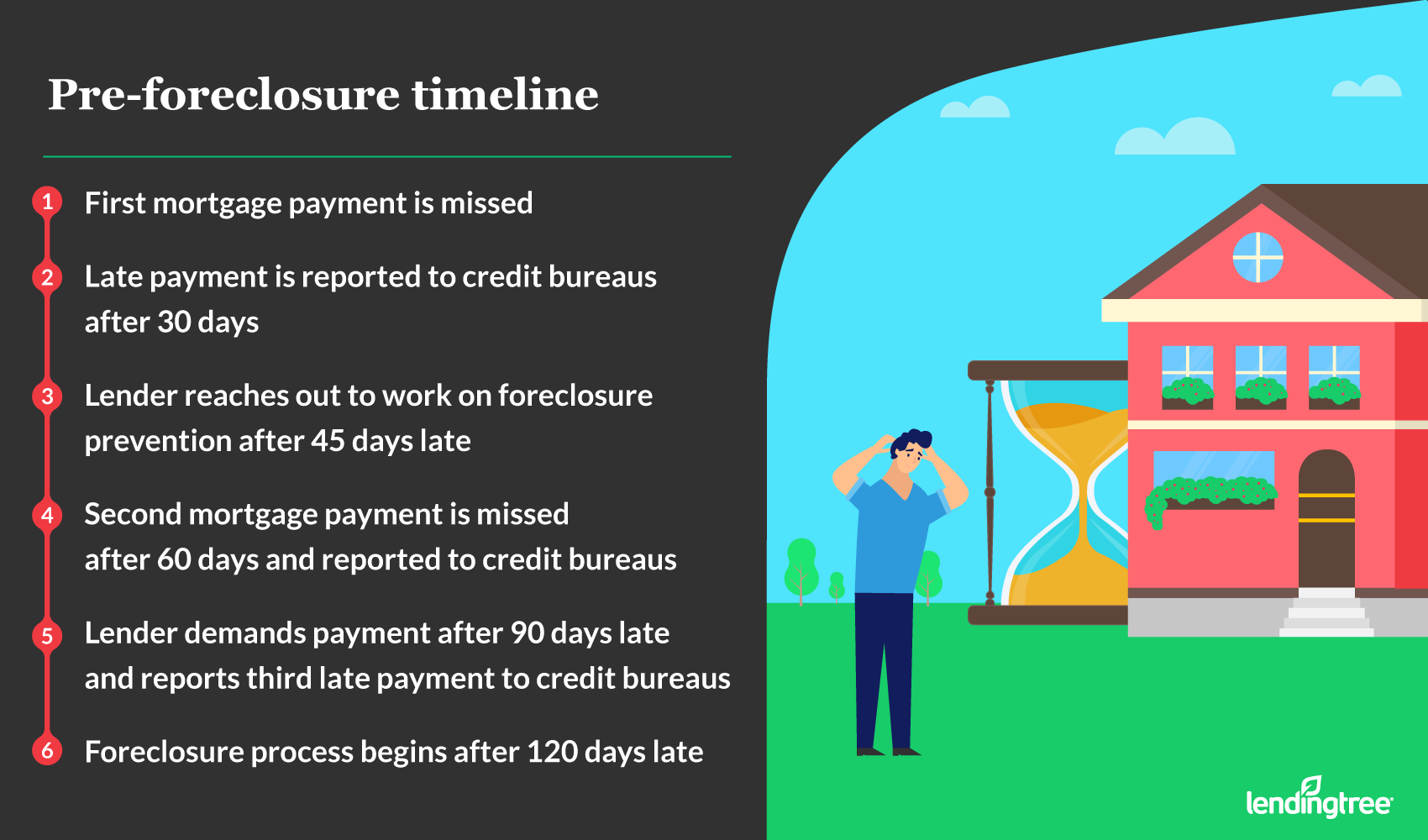What Is a Foreclosure and How Does It Work?
Part of what defines a mortgage loan, and differentiates it from other loan types, is that the house you buy with it can be repossessed if you fail to make payments. Foreclosure is simply the legal process a creditor uses to take back ownership of a house if a borrower defaults on a loan. If you’re wondering not just how to define foreclosure, but what foreclosure means for you, read on.
On this page
Foreclosure definition: What is it?
When you take out a mortgage, you’re agreeing to put your house up as collateral for the loan. If you fail to make timely payments, the creditor can take back your house and sell it to recoup some of their money. Foreclosure rules set out exactly how a creditor can do this, but also provide some rights and protections for the homeowner. However, at the end of the foreclosure process, your home is repossessed and you must move out.
The foreclosure process and timeline
Missed payments are the first step on the path to foreclosure. Typically, your lender can’t initiate foreclosure unless you’re at least 120 days behind on your mortgage payments. During those 120 days, known as pre-foreclosure, your lender is also required to provide “loss mitigation” options designed to help you resolve the situation with as little damage to your credit and finances as possible. If you can’t work out an alternative plan, though, your lender will continue to pursue foreclosure and repossess your house. Your state of residence will dictate which type of foreclosure process can be used: judicial or non-judicial.

The average time it takes to complete the foreclosure process has consistently risen over the past decade and was around 2.5 years in 2021, but non-judicial foreclosures can take only a few months. Non-judicial foreclosure means that the creditor can take back your home without going to court, which is typically the quickest and cheapest option.
Judicial foreclosure, on the other hand, is slower because it requires a creditor to file a lawsuit and get a court order before they can take legal control of a house and sell it. Since you still own the house until it’s sold, you’re legally allowed to continue living in your home until the foreclosure concludes.
Understanding the financial consequences of foreclosure
Foreclosure can have a dramatic effect on your credit score, and the higher your score was to begin with, the more precipitously it will drop. For example, if you had a 780 score before losing your home, you might lose as many as 160 points after a foreclosure, according to data from FICO.com. In comparison, someone with a starting score of 680 likely stands to lose up to 105 points. The data also show that it can take around three to seven years for your score to fully recover after a foreclosure, short sale or deed-in-lieu of foreclosure.
How soon can I get a mortgage after foreclosure?
The good news is that it’s possible to get another mortgage after a foreclosure, just not immediately. A foreclosure will remain on your credit report for seven years, but not all lenders make you wait that long.
Here are the most common waiting period requirements:
| Loan program | Waiting period | With extenuating circumstances |
|---|---|---|
| Conventional | 7 years | 3 years |
| FHA | 3 years | Less than 3 years |
| VA | 2 years | Less than 2 years |
| USDA | 3 years | Less than 3 years |
How to stop foreclosure
If you’re having financial difficulties, you can reach out to your mortgage lender at any time — you don’t have to wait until you’re behind on payments to get help. Lenders aren’t only required to offer you other options before foreclosing, but are generally motivated to help you avoid foreclosure by their own financial interests. Here are a few options your mortgage lender may be able to offer you to ease your financial hardship:
Forbearance. A mortgage forbearance is when you make an agreement with your lender that allows you to temporarily pay less or stop making mortgage payments altogether. Once the hardship is over, you’ll still owe the payments you missed.
Modification.A mortgage modification program alters the terms of your home loan in order to make your mortgage payments more affordable. For instance, Fannie Mae and Freddie Mac offer the Flex Modification program, which can reduce your payments by 20%.
Mortgage release.Also known as a deed-in-lieu of foreclosure, a mortgage release allows you to transfer legal ownership of your home to your mortgage lender. In doing so, you lose the asset, and suffer a temporary credit score drop, but gain freedom from your obligation to repay what remains on the loan.
Short sale.A short sale allows you to sell your house for a price that’s less than the balance remaining on your mortgage. The money goes to your mortgage lender, who in return agrees to release you from any further debt.
Moving forward from foreclosure
Although home foreclosures can be scary and discouraging, you should face the process head on. Reach out for help as soon as you begin to struggle to make your mortgage payments. That can mean working with your lender, speaking with a housing counselor or both. Anyone can access foreclosure-prevention counseling free of charge through the federal government’s housing counseling program.
Taking an active approach can help you stand a good chance of coming out the other side with less damage to your credit and finances than you might think.


